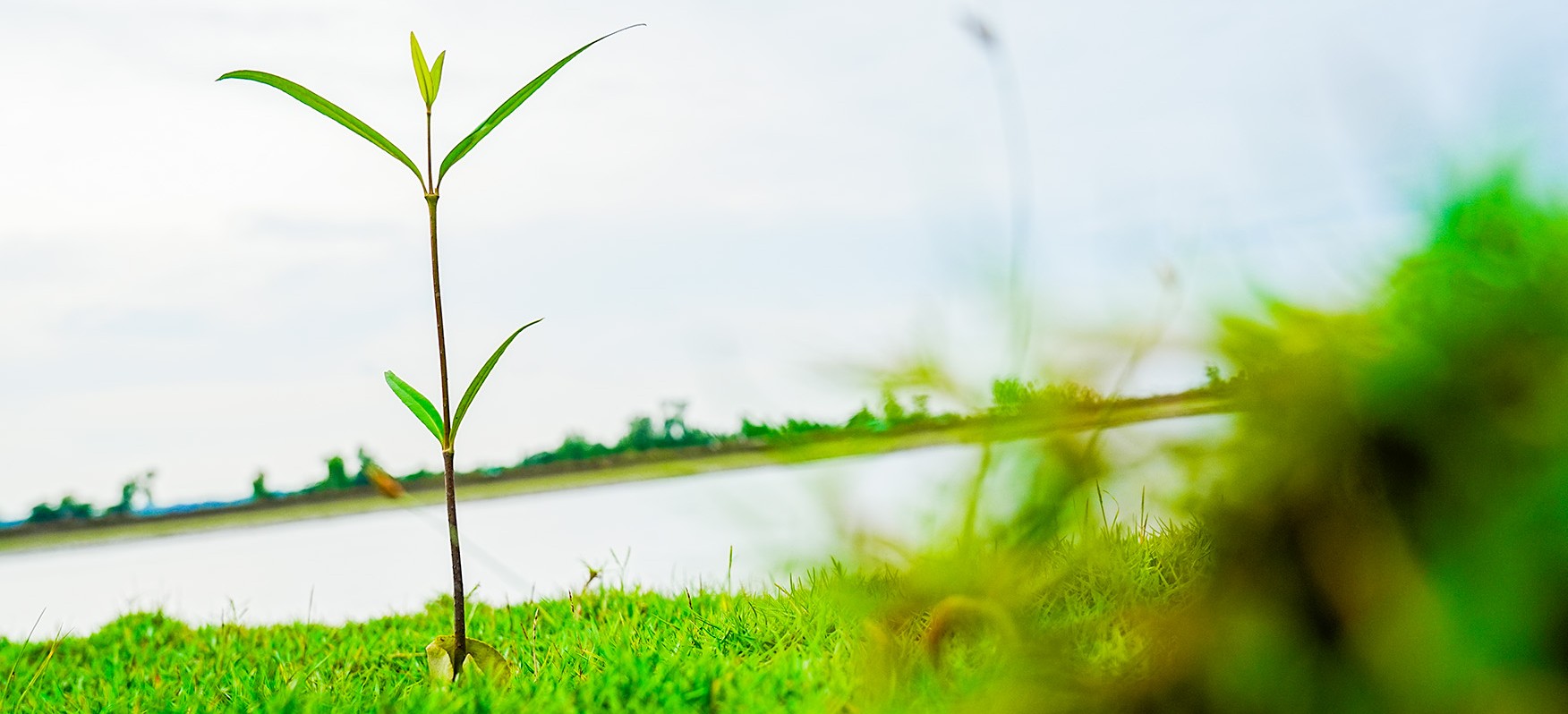Once home to the oldest mangrove forest in Bangladesh, Chakaria’s coastline now fights to survive against rising seas and violent storms. But hope is returning - root by root. Along fragile embankments, new mangrove plantations are taking hold, forming living shields that protect people, strengthen coasts, and restore lost biodiversity.
Once, the Chakaria Sundarbans stretched across the southern coast of Bangladesh - a vast, living forest where mangroves breathed life into the sea. Today, little remains of that ancient ecosystem. What was once a natural fortress against storms has largely given way to shrimp farms and salt pans, leaving the coast exposed to the full force of cyclones, tidal surges, and rising seas.
In recent decades, embankments have been built to protect shrimp farms and nearby settlements. But concrete and clay alone cannot stand forever against the ocean’s fury. Each monsoon season, tidal waves gnaw at their edges, turning defense walls into fragile lines of hope.
The most enduring solution, as experience and research now confirm, lies in nature itself. Planting mangroves — along with carefully chosen non-mangrove species — along embankments creates living green shields that strengthen with time. Unlike concrete walls, these trees grow, adapt, and regenerate, offering protection to both people and ecosystems.
 Mangrove forest along the coast of Matamuhuri river. © AF/Arifur Rahman
Mangrove forest along the coast of Matamuhuri river. © AF/Arifur RahmanMangroves are more than trees standing in saltwater. Their dense roots and tangled stems absorb the energy of waves, reducing tidal force by up to 80 percent. They stabilize soil, prevent erosion, and hold embankments firm.
During cyclones, mangrove belts act as life-saving buffers. Survivors of the 1991 cyclone - one of Bangladesh’s deadliest - still recall how areas shielded by mangroves faced less destruction, while open coasts were swept clean by a 20-foot surge.
Beyond protection, mangroves sustain life. Their roots provide nurseries for fish and crustaceans, nesting grounds for birds, and shelter for countless species. They are also powerful carbon sinks, storing up to four times more carbon than terrestrial forests.
 A young Baen seedling emerges from broadcasted seeds in the embankment. © AF/Arifur Rahman
A young Baen seedling emerges from broadcasted seeds in the embankment. © AF/Arifur RahmanThe success of a mangrove plantation depends on where it begins. Ideal sites have regular tidal flow, soft alluvial soil, and moderate salinity. In Chakaria, these conditions vary, as livelihoods like salt production and fishing compete for the same tidal space.
Species selection is equally crucial. Fast-growing species such as Keora (Sonneratia apetala) and Baen (Avicennia officinalis) quickly stabilize muddy banks. Gewa (Excoecaria agallocha) adds diversity and enriches the soil, while Sundari (Heritiera fomes), though slower to grow, ensures long-term ecological balance. Studies by Alam et al. (2014) recommend a combination of Keora, Moricha Baen, and Sada Baen for the Chaurfari site — a blend that balances quick establishment with lasting strength.
Planting methods that work
Two main techniques are commonly used:
A well-designed plantation usually forms three protective belts: pioneers like Keora on the tidal edge, stabilizers such as Gewa in the middle, and slower species like Sundari closer to the embankment. Together, they create a tiered green wall that evolves with the tides.
 Uncontrolled grazing is one of the major threats to the survival of young mangroves. © AF/Arifur Rahman
Uncontrolled grazing is one of the major threats to the survival of young mangroves. © AF/Arifur RahmanEven with the best planning, nature tests resilience. Young plantations suffer from tidal surges, fluctuating salinity, and uncontrolled grazing. Shrimp enclosures and unregulated fishing add further strain. Without community participation and long-term care, many plantations fail before they can mature into natural barriers.
A living solution for a changing coast
Mangrove restoration along embankments is not just about planting trees — it is about restoring balance. These living shields defend coasts, nurture biodiversity, store carbon, and sustain local livelihoods.
Each sapling planted today is a promise: that the coast of Chakaria will once again breathe with the rhythm of tides and roots. Rebuilding these green shields means more than saving land — it means giving future generations a coast that can stand strong on its own.
References
Alam, S., Hossain, M. L., Foysal, M. A., & Misbahuzzaman, K. (2014). Growth performance of mangrove species in Chakaria Sundarban. International Journal of Ecosystem, 4(5), 233–238.
Hossain, M. S. (2001). Goodbye Chakaria Sunderban: The oldest mangrove forest. Wetland Science and Practice, 18(3), 19–22.
Comments